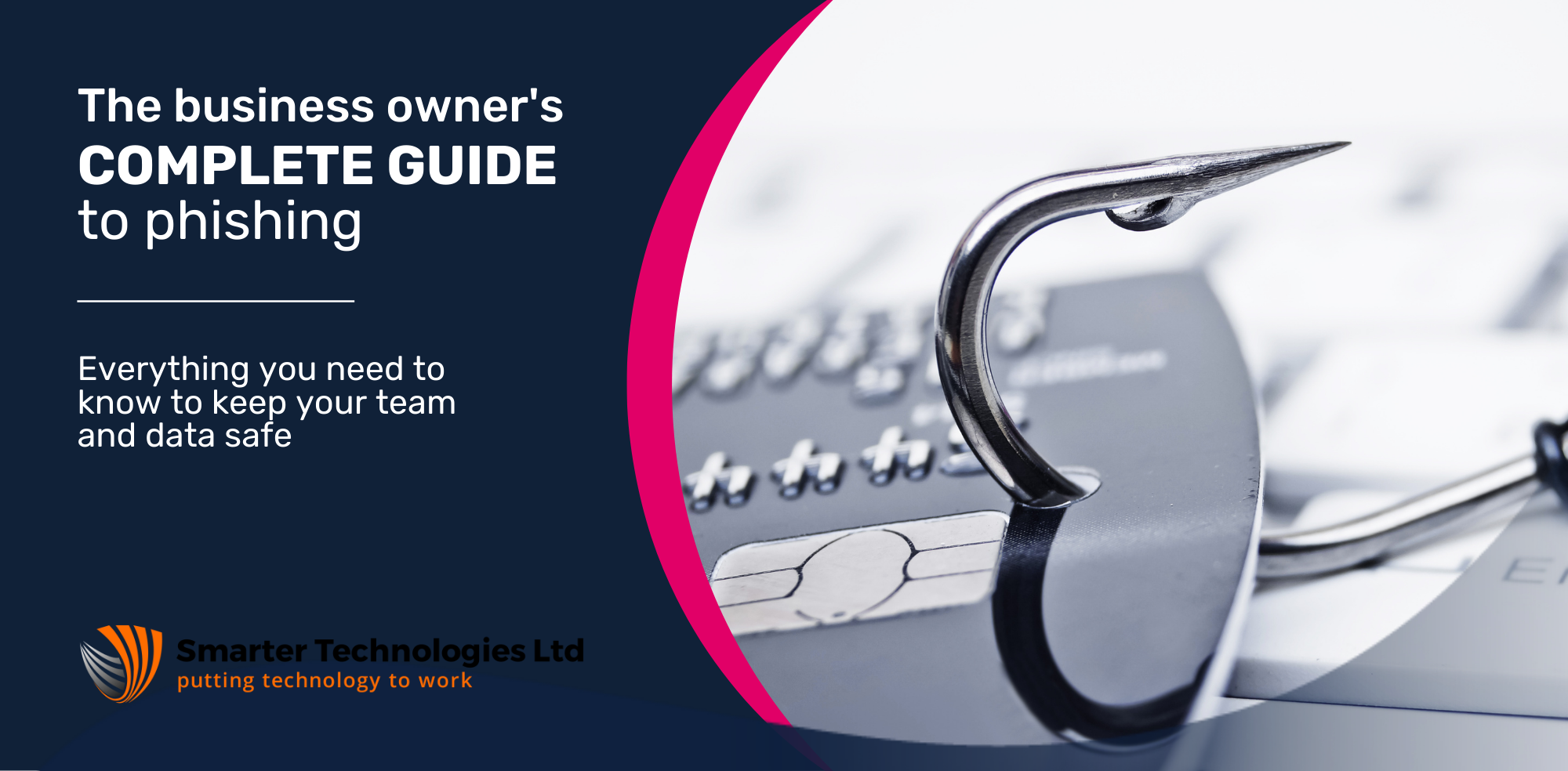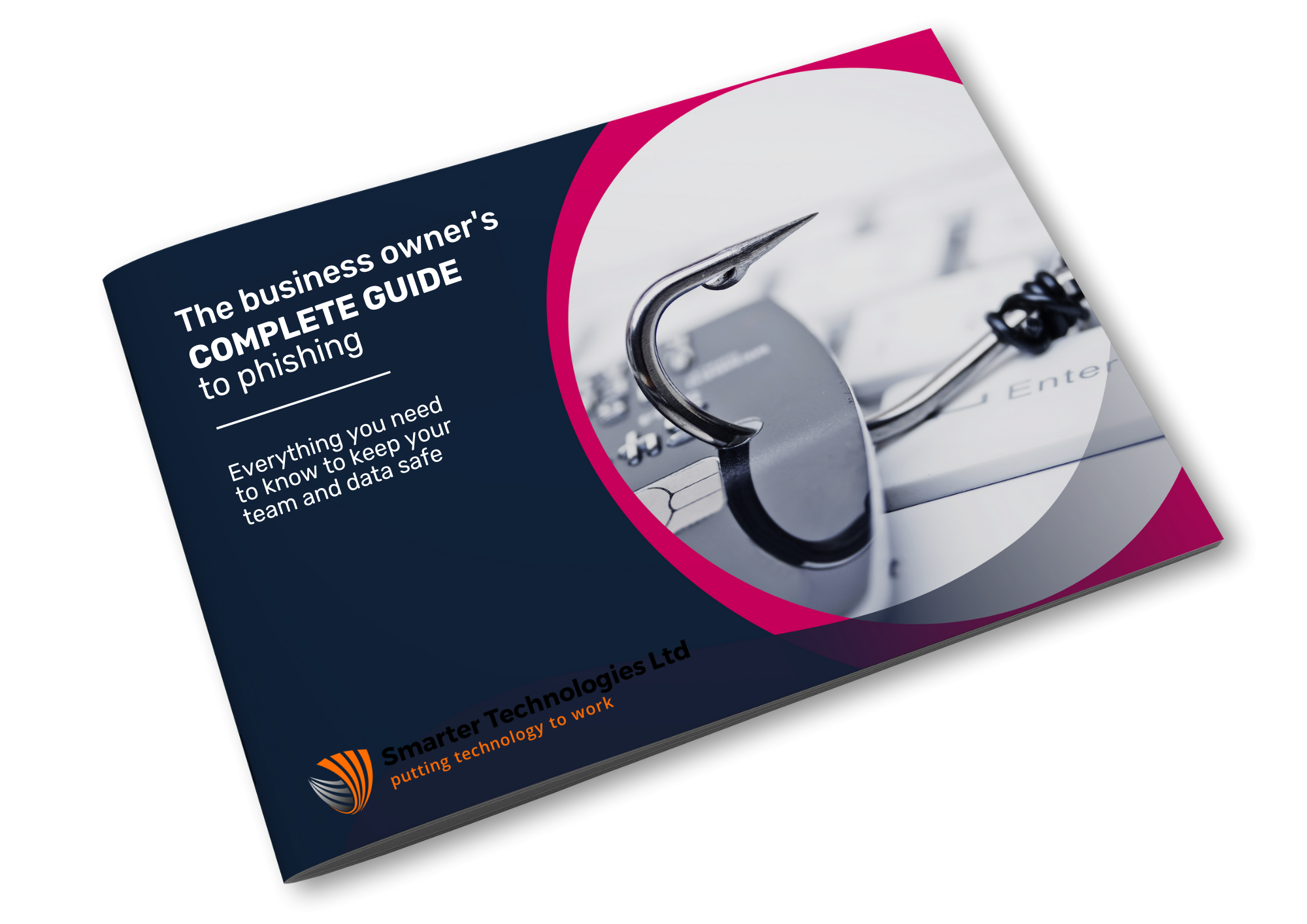What’s phishing and how to avoid it?
It’s likely you’ve heard of phishing and know it’s something you want to avoid.
But do you know what it really means and exactly how an attack works?
In our experience, lots of people don’t know the specifics. And that’s OK. But the key to keeping your business protected from these attacks is to know exactly how they work and the red flags to look out for.
This guide is here to do just that.

It’s called ‘phishing’ because cyber criminals bait unsuspecting victims into ‘biting’, much in the same way you’d lure a fish to a hook with a big juicy maggot.
This virtual bait is usually in the form of an email. And when the victim gets hooked, their device and potentially their whole network can become infected with malware.
Or the victim is enticed into giving away login credentials which can lead to data and even financial theft.
These attacks aren’t just inconvenient. You should see how much time, expense and stress has to be invested in fixing the damage.
Understand this: You want to avoid a phishing attack.
Oh, and they doesn’t always come in the form of an email either. Videos, texts and many other vectors are used as well.
To help you understand just how prevalent these attacks have become, here are some scary stats…
- Last year 83% of organisations reported experiencing phishing attacks – that’s up 28% from 2020
- It’s expected there will be an additional 6 billion attacks this year
- A third of phishing emails are opened
- Around 90% of data breaches occur as a result of phishing
- 1 in 99 emails is a phishing attack. 25% of these slip through the security filters in your Microsoft 365 inbox
- 60% of successful phishing attacks result in lost data
- 52% result in a compromise of login credentials
- 47% of phishing attacks lead to ransomware, where your data is encrypted and held hostage until you pay a ransom fee.
Download our free guide to find out how to protect your business.















